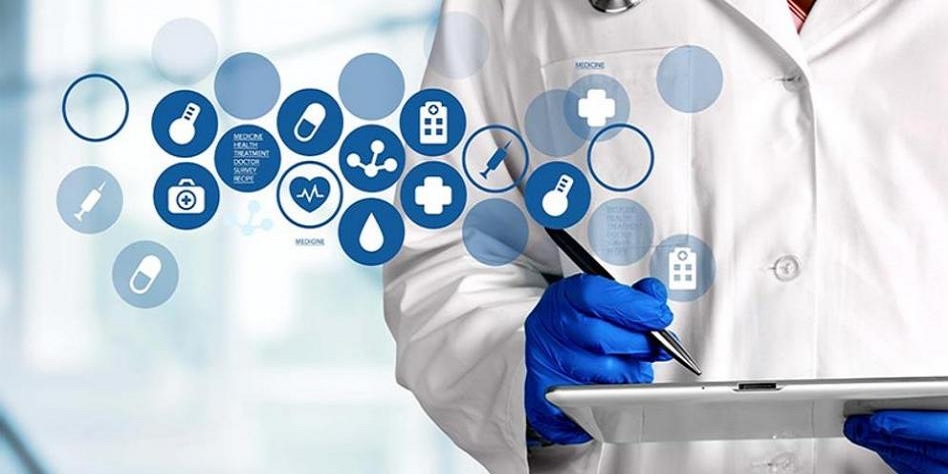Types of Healthcare Information Systems for Better Patient Care

The healthcare industry relies heavily on information systems to improve patient care and streamline processes. Healthcare information systems encompass various technologies that store, manage, and transmit patient data. They contribute to cost savings and are essential for enhancing patient care.
In this article, we explore four types of healthcare information systems: electronic health records (EHRs), health information exchange (HIE), telehealth and telemedicine systems, and clinical decision support systems (CDSS). By understanding the benefits of these systems, we can appreciate the significant impact that they have on improving healthcare outcomes.
Electronic Health Records
EHRs are digital versions of patients' medical records that provide a comprehensive view of their health history. EHR systems offer significant benefits for cost savings and better patient care. First, transitioning from paper-based to electronic records reduces paperwork and administrative costs. This streamlined approach saves time and resources, enabling healthcare professionals to focus more on patient care.
Second, EHR systems improve the accuracy of patient records. Human errors in deciphering handwritten notes or transcribing data are eliminated, reducing the risk of medical mistakes. Accurate records ensure that patients receive appropriate treatment and medications, ultimately leading to better healthcare outcomes.
Finally, in terms of patient care, EHR systems enhance data accessibility for healthcare providers. Authorized personnel can quickly retrieve patient data, including medical history, test results, and treatment plans. This accessibility promotes timely decision-making, resulting in efficient and effective care delivery. EHR systems also support evidence-based medicine by providing healthcare professionals with access to the latest research and guidelines.
Health Information Exchange
HIE is the electronic sharing of patient health information between different healthcare organizations. Its primary purpose is to improve care coordination and enable seamless communication among healthcare providers. HIE systems offer numerous cost-saving benefits by reducing redundant testing and procedures. When patient data is readily available across different healthcare settings, unnecessary tests can be avoided, reducing healthcare costs.
Additionally, HIE promotes better patient care through improved care coordination. In emergency situations, timely access to patient data is crucial for healthcare providers. HIE systems facilitate the exchange of critical information, enabling prompt decision-making and appropriate interventions. Furthermore, HIE enhances communication among healthcare providers, ensuring that all team members are well-informed about the patient's condition. This collaborative approach leads to more efficient and effective care delivery.
Telehealth and Telemedicine Systems
Telehealth and telemedicine systems leverage technology to deliver healthcare services remotely. These systems offer significant cost-saving advantages for patients and healthcare facilities. Telehealth eliminates the need for patients to travel long distances for routine consultations, reducing travel expenses. This saves patients money and increases access to healthcare services, particularly for individuals residing in remote areas.
Moreover, telehealth systems benefit healthcare facilities by lowering overhead costs. With telehealth, medical professionals can provide virtual consultations, reducing the need for physical office space and infrastructure. This cost-effective approach enables healthcare providers to reach a larger patient population while minimizing operational expenses.
In addition to cost savings, telehealth improves patient care by increasing access to healthcare services. Patients can receive medical advice, consultations, and even remote monitoring for chronic conditions from the comfort of their homes. This accessibility ensures that patients receive timely care and interventions, leading to better health outcomes.
Clinical Decision Support Systems
CDSS utilize algorithms and medical knowledge to provide healthcare professionals with evidence-based treatment recommendations. They contribute to cost savings and enhance patient care. CDSS also reduce medical errors by alerting healthcare providers to potential issues. These systems can flag medication interactions, highlight possible allergies, and provide reminders for preventive care measures. By minimizing errors, a CDSS ensures that patients receive safe and appropriate treatment.
It also enables more efficient resource allocation. With access to patient data and clinical guidelines, healthcare professionals can make informed decisions about resource utilization. This optimization of resources leads to improved outcomes.
A CDSS also enhances patient care by providing evidence-based treatment recommendations. Healthcare professionals can rely on the system to access the latest research and clinical guidelines, ensuring that patients receive the most up-to-date and effective treatments.
Conclusion
Healthcare information systems are crucial for improving patient care and reducing costs. EHR, HIE, telehealth and telemedicine systems, and CDSS offer numerous benefits that contribute to better healthcare outcomes. Modern technology facilitates enhanced communication and collaboration, a significant advantage in the healthcare industry. This advancement enables better interactions between patients and providers, leading to improved relationships and more effective healthcare delivery. By embracing these technologies, healthcare providers can enhance data accessibility, promote evidence-based medicine, improve care coordination, increase access to services, and reduce medical errors.
As healthcare information systems continue to evolve, we can anticipate even greater advancements in the future. Integrating artificial intelligence and machine learning will further enhance the capabilities of these systems, leading to more personalized and efficient patient care.
A technology development partner like OtterSoft can play a crucial role in helping businesses achieve cost savings, gain access to expertise, and improve overall efficiency. By collaborating with such a partner, companies can benefit from high-quality solutions that optimize their operations and reduce expenses.
Here at OtterSoft, we help healthcare technology providers drive innovation and integrate systems to seamlessly enable healthcare organizations to identify areas for improvement and implement changes to enhance patient experiences continually. See how we can help you overcome healthcare innovation challenges by strategically partnering with a development team.

